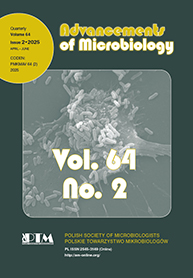Abstract: Obesity is a disease which is currently one of the most serious problems affecting approximately 650 million people worldwide. Improper lifestyle is considered the primary cause of the disease; however, many other factors contribute to the problem. In recent years, attention has been drawn to the role of gut microbiota in developing and controlling obesity and overweight. Microorganisms in the gastrointestinal tract are responsible for the fermentation of certain nutrients, causing efficient digestion, stimulation of intestinal transit, vitamin production, and modulation of the host’s immune system. Numerous studies have demonstrated that gut microbiota composition differs between obese individuals and those with a normal body mass index (BMI). It has also been shown that altering gut microbiota can influence the phenotype of the host organism, promoting metabolic changes, including BMI reduction. Recent studies aimed at using probiotics to modify gut microbiota composition to reduce body weight are still inconclusive.
All posts by Anna Białecka
Abstract: Listeria monocytogenes bacilli are a known cause of non-invasive gastrointestinal listeriosis with diarrhea, less frequently they cause invasive infections: meningitis and encephalitis, bacteremia and its complications: endocarditis, intraocular inflammation of the eye and others. The risk of human infection is mainly associated with consuming food contaminated with these bacteria. According to the European Food Safety Authority (EFSA), infections with L. monocytogenes etiology caused the highest hospitalizations and deaths among zoonotic diseases reported in 2022. A report by the European Center for Disease Prevention and Control (ECDC) reported 0.44 cases of listeriosis per 100,000 population in 2021, with the highest incidence rate for people over 64 years old at 1.7.
The study aimed to review and describe cases of invasive listeriosis diagnosed in adult patients in Europe between 2010 and 2023. Fifty-two cases of the disease were included, of which 19 were meningitis, 13 showed bacteremia, nine were associated with endocarditis and 10 with intraocular inflammation. One case had a clinical form of hepatitis. Only seven cases of L. monocytogenes infection were related to consuming contaminated food. Eleven cases ended in the death of patients.
Invasive listeriosis is a difficult-to-treat infection with a significant mortality rate. It requires decisive action by monitoring the prevalence and extent of food contamination with these microorganisms and preventing epidemic outbreaks. Research on listeriosis should focus on improving the clinical treatment of severe cases of infection and studying the complex mechanisms of their pathogenesis.
Abstract: Many methods have been developed for studying and comparing bacterial diversity. These methods suffer from a number of drawbacks. Culture-dependent methods have a drawback that only a small number of bacteria can be cultured. Although many modifications in the traditional cultivation approach have been made, such as the use of gellan instead of agar and high throughput dilution to extinction culturing, but a large fraction of microbes still remain uncultured. Culture-independent methods were developed to explore uncultured bacterial diversity but they have their own drawbacks. PCR-based methods have biases during DNA extraction and the removal of substances that may inhibit polymerase activity during PCR and digestion with restriction enzymes. “Omics” approach, i.e., metagenomics, metatranscriptomics, and metaproteomics, aim to link bacterial community structure with function. Different combinations of methods can be used to know more precisely about the bacterial diversity. To date, no known method can reveal the exact bacterial diversity of different environments. This lacuna needs to be filled and newer methods must be developed that can help in exploring the immense bacterial diversity created by nature.
Abstract: Stenotrophomonas maltophilia is an important etiological factor of infections in patients with compromised immune systems, undergoing invasive diagnostic and therapeutic procedures, as well as in those suffering from cancer or cystic fibrosis. It poses a threat primarily to hospitalized patients. Due to its broad natural resistance and increasing acquired resistance, the therapy of infections caused by this pathogen is a challenge for modern medicine. The paper presents the current knowledge about the general characteristics, clinical significance and the most important pathogenicity factors of S. maltophilia. It also discusses therapeutic possibilities, including alternative ones, in infections caused by these microorganisms.
Abstract: Biosurfactants are a group of surface-active agents mainly produced by microorganisms and have a wide range of applications in industries as well as agriculture. Global usage of such biologically active compounds as detergents, bioremediation agents, cosmetic products is hugely dependent on their high production. New avenues of research have opened up due to this increased interest, most of which are focused on identifying specialized microorganisms capable of biosurfactant production. Screening methods for selection of biosurfactant producing bacteria are, therefore, of utmost importance in this endeavor. The aim of this review was to discuss various conventional and novel methods that can overcome the hurdles encountered in time effective, economical microbial biosurfactant screening. This review lists several important biosurfactant screening methods based on supernatant, biomass as well as culture media. New methods devised for biosurfactant screening in the last half decade such as surfactant dependent dye solubilization, metagenomic studies etc. are also explained in detail. A thorough grasp of both contemporary and anachronistic screening methodologies will not only lead to discoveries of novel native strains capable of biosurfactant production but also form the basis on which new screening methods can be devised

